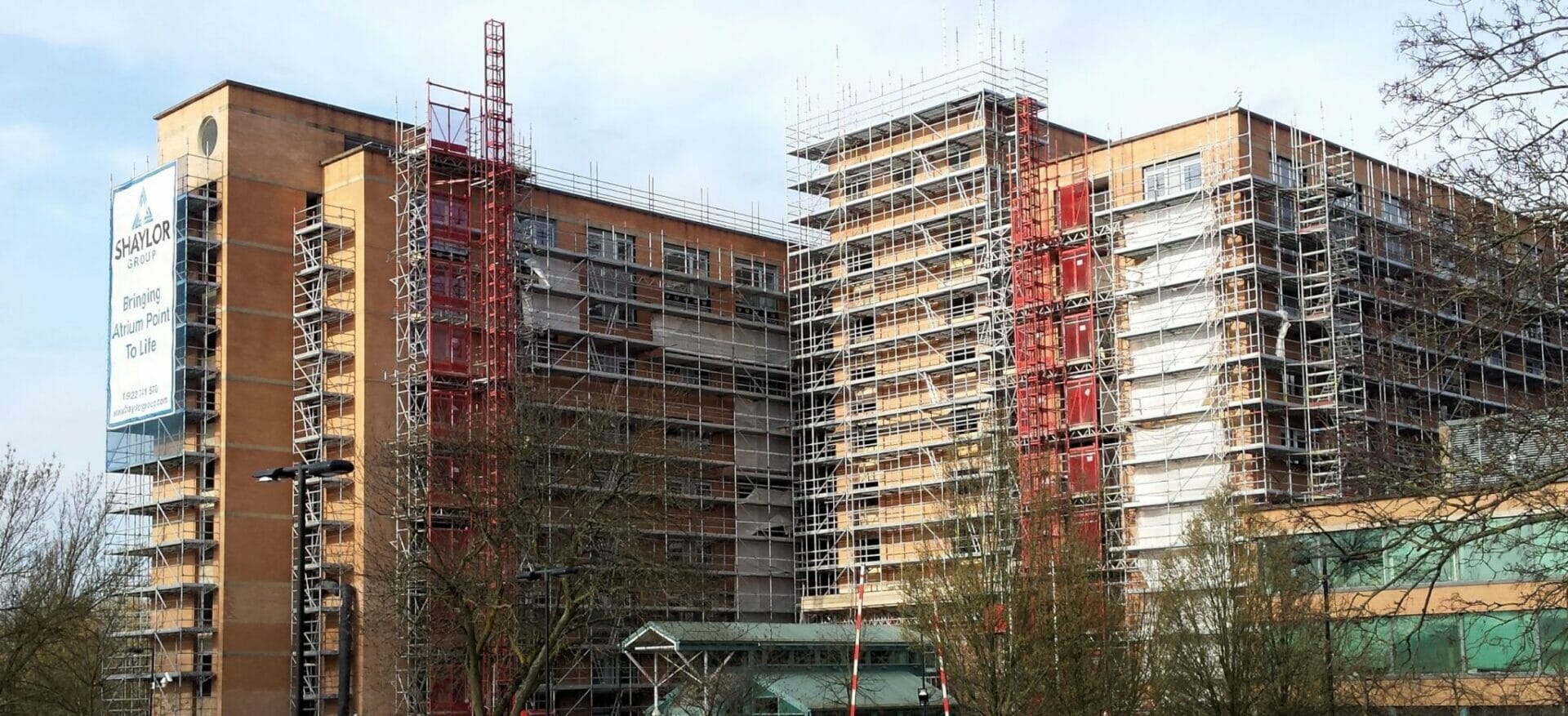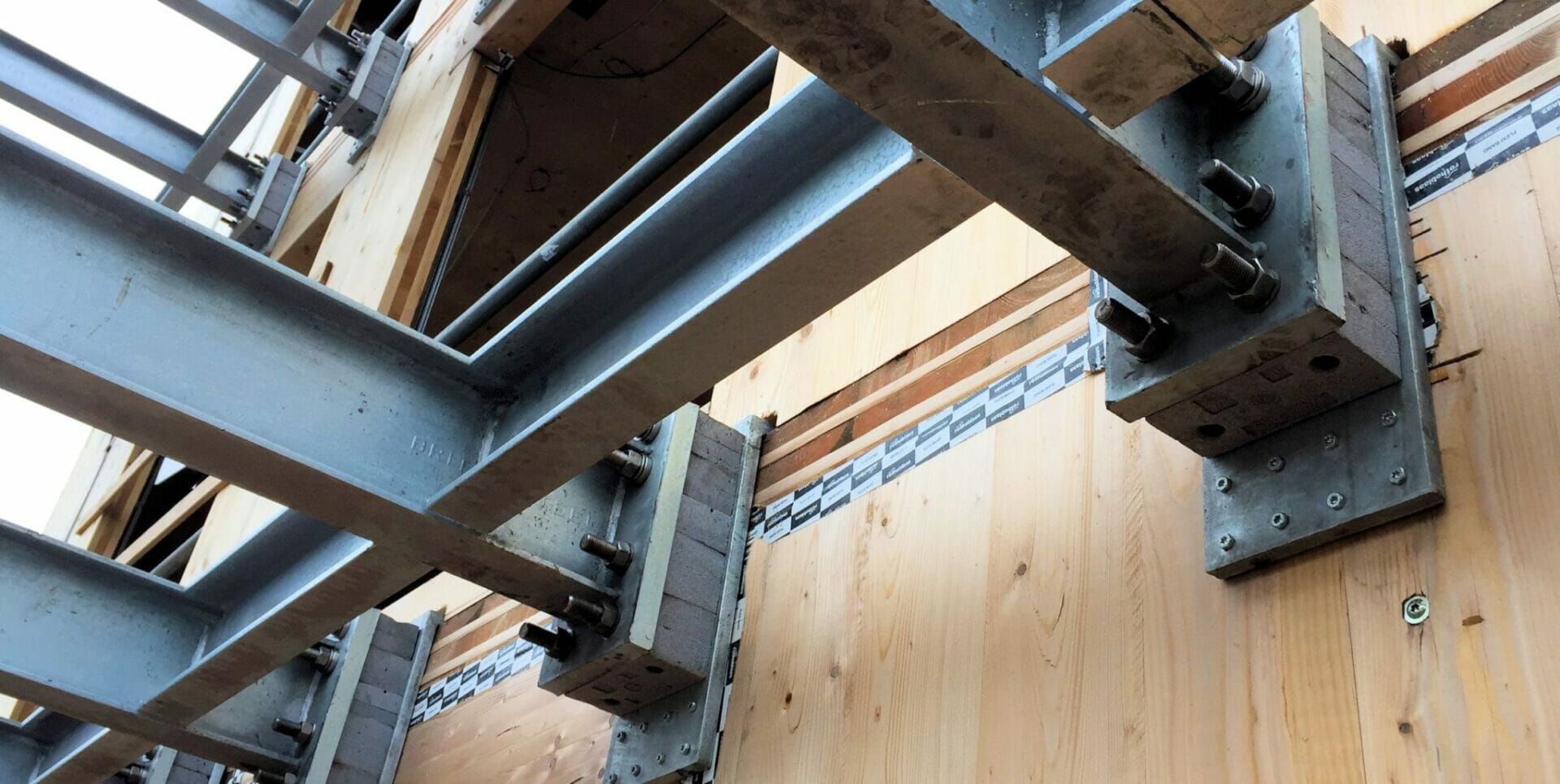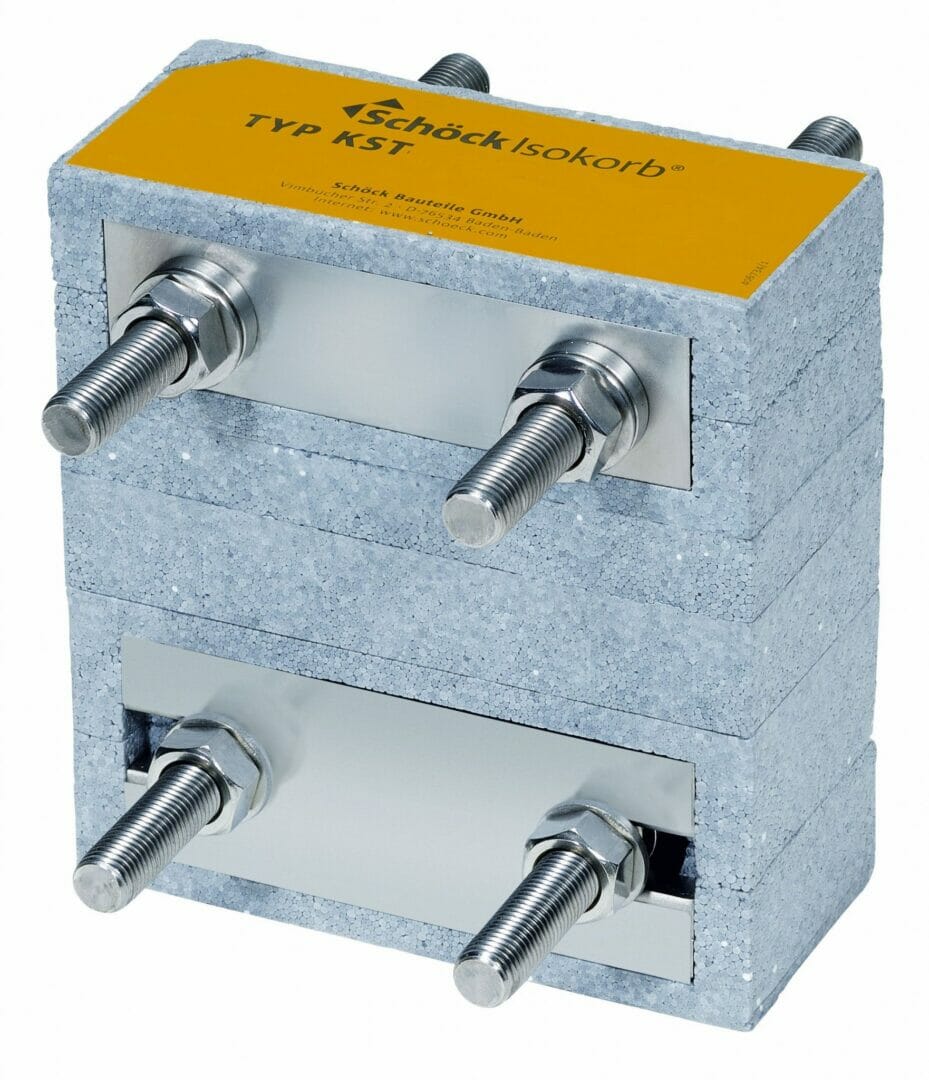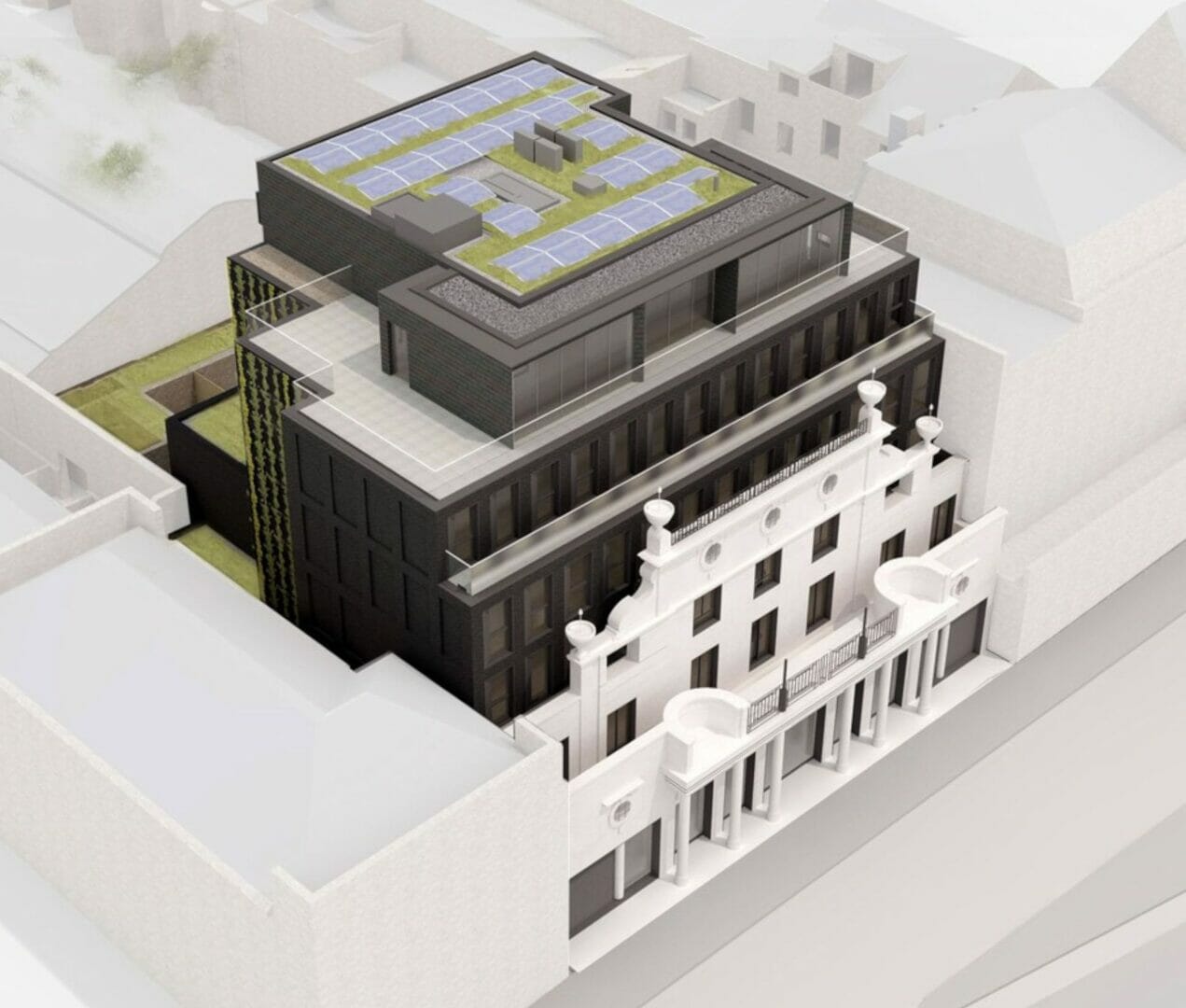
The Schöck Isokorb is widely recognised for its performance as an adaptable heat-insulating load-bearing element for the thermal partitioning of practically any cantilever connectivity requirement. Two current projects in London demonstrate this adaptabiility in helping to faclitate a solution for applications that are a little unconventional.
…Retrofit solution for major office-to-residential conversion
The Kellogg Tower at Sudbury Hill, in North West London, previously the London headquarters of the international turnkey projects contractor M.W Kellogg, is being transformed into a contemporary residential scheme known as Atrium Point. The existing buildings are being sustainably refurbished, with solar panels, air source pumps and heat recovery units, all contributing to meet CO2 reductions.

It is currently one of the largest office-to-residential schemes in the capital and will realise a mix of a 290 residential units, including studios, one bedroom and two bedroom apartments. Many of the new units benefit from a cantilevered steel balcony, connected to the existing reinforced concrete slab. Structural thermal performance is a key consideration and the Schöck Isokorb type RKS for refurbishment applications offers the ideal solution.
Replace or add balconies to an existing building

The type RKS product has a 120mm insulation element thickness and is a load-bearing thermal break. It allows the replacement, or addition, of balconies to an existing building, by connecting cantilevered steel balconies to the reinforced concrete slab. This is achieved by chemically anchoring the Isokorb to the exterior of the building via the structural floor slab edge. Not only a practical solution, but it also avoids any damage to the internal structure or finishes. It minimises thermal bridges at concrete-to-steel connections on cantilever balconies and transfers negative moments and positive shear forces. This offers a number of different options for integrated, energy-efficient building renovation and guarantees enormous scope for design. An additional feature is that the product has been fully certified as an “Energy saving component” by the Passivhaus Institute in Darmstadt, Germany, which highlights the importance of thermal performance, even for refurbishment projects of this type.
…Connecting to cross-laminated timber at Hoxton cinema
Originally opened in 1914, Hoxton Cinema in London’s East End became a victim of the first wave of mass cinema closures in 1956. The next forty years saw the building in Pitfield Street serve as home to a number of different trades, until it eventually fell into disrepair. However, Hoxton Cinema is back in the limelight with plans for a replica of the original 1914 Gaumont façade to be reconstructed. Behind it will be a development of contemporary black-brick one, two and three bedroom apartments – and in the basement, with a nod to the past, the doors will be opening to a three-screen arthouse cinema.
The design consists of two distinct elements. A solid concrete ground level to accommodate the cinema and an acoustically insulated cross-laminated timber (CLT) upper residential element. This has a stepped western elevation providing gardens and balconies. The balconies are of steel construction and typically these would be connected to a concrete or steel building frame.
Steel balconies connected to CLT
However, the less conventional requirement here is to connect the steel balconies to the CLT, fabricated for the project by KLH UK. Cross-laminated

timber performs well thermally, but the steel cantilever with its high thermal conductivity penetrates the insulation layer, so it is important to minimise the risk of any potential thermal bridging problems. The Isokorb type KST – usually for steel-to-steel connections – has been cleverly integrated here. It is a modular product and can be adapted to all profile sizes and load-bearing capacity requirements. With this particular project, a right angle steel retaining plate has first been fixed to the CLT outer wall and floor using heavy duty screws. The inner face of the Isokorb KST is then bolted to the retaining plate and the steel balcony in turn is then connected to the outer face of the module. The result is a more rigid structure and the prevention of any increased heat loss or, just as importantly, condensation, particularly where it might occur under the steel retaining plates at the connectivity points with the CLT.
 Always meeting stringent standards
Always meeting stringent standards
The Schöck Isokorb range allows connections to be made between concrete-to-concrete, concrete-to-steel, steel-to-steel, wood-to-steel. There is even a maintenance free alternative to wrapped parapets. All units meet full compliance with the relevant building regulations, provide LABC registration and the have achieved the highest level of BBA Certification.
For your free copy of the new Thermal Bridging Guide and / or the Thermal Bridging Solutions brochure – contact the company on 01865 290 890 or visit www.schoeck.co.uk
